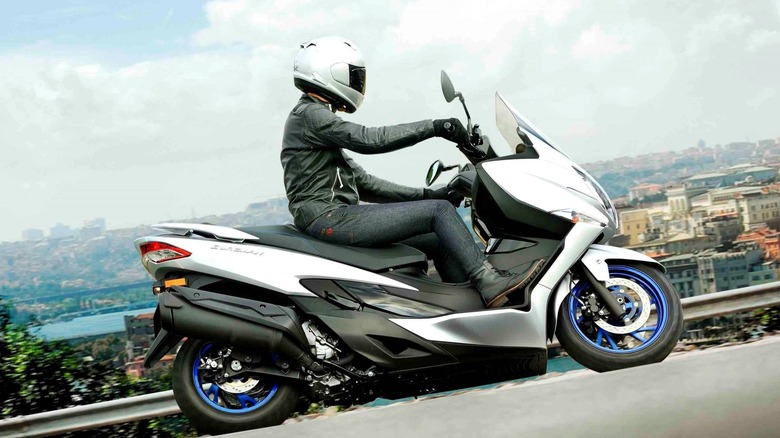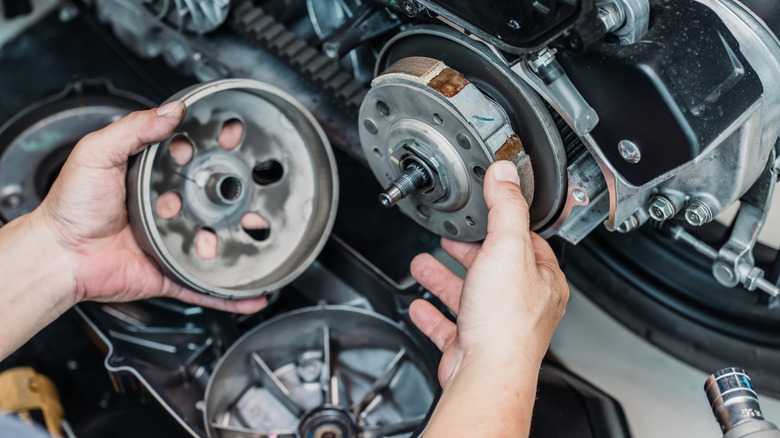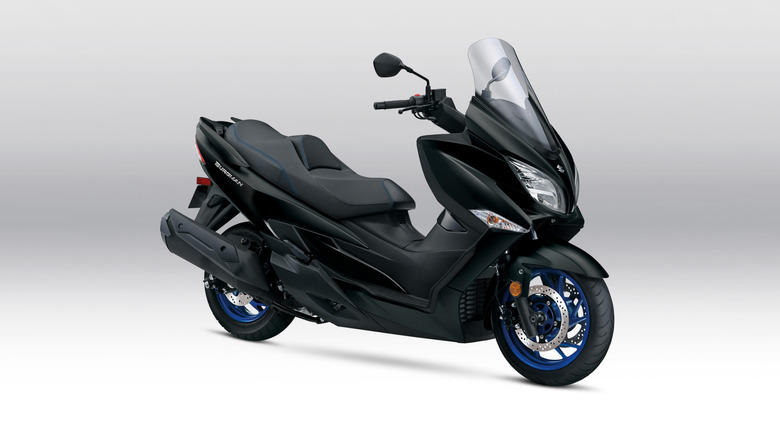Which Motorcycles Have A CVT Transmission? (And How Does It Work?)
When it comes to motorcycle transmissions, there has been a long-standing debate between manual and automatic systems. Manual transmissions are known for their control and connection to tradition, and they've dominated the scene for decades. Then automatics came in and simplified riding. However, they weren't well received by riders who preferred being in control and remaining true to the tradition. But now, even the automatic transmission has become an old thing, with the introduction of the Continuously Variable Transmission (CVT). Unlike the other types of motorcycle transmissions, the CVT eliminates the need for fixed gear ratios. This means no hard shifts, no clutch control, and, most importantly, a smoother drive.
A continuous variable transmission is a type of transmission that changes the motorcycle riding experience. Manual transmissions require gear shifting, demanding more from the driver. This hands-on experience keeps you engaged and immersed in the moment, which is why many riders find it more enjoyable to drive. On the other hand, the CVT systems transfer power using a belt-and-pulley system, without the need for clutch control of gears. The CVT's constant power delivery gives you an uninterrupted riding experience. Just twist the throttle and it handles the rest.
What makes CVTs so special is their departure from the conventional. These shiftless systems deliver constant angular velocity, regardless of speed, and they enhance fuel efficiency in the process. But being good (or even better) transmission systems hasn't saved them from scrutiny, as many purists argue that the CVT's shiftless nature lacks the "soul" and engagement of traditional systems. Despite this division, CVTs continue to gain ground in the automatic motorcycle world, including in some of the fastest automatic transmission motorcycles.
How does a CVT transmission in a motorcycle work?
At its core, a CVT in a motorcycle consists of several interconnected components. The drive pulley serves as the starting point of power delivery and is connected to the engine's crankshaft. The frame comprises an inner plate that is closer to the engine and the outer one facing the transmission belt. A slider plate moves in response to the engine's rotational power, while the driven pulley, at the other end, transfers power to the rear wheel. While other transmissions rely on fixed gear ratios and hard shifts, the CVT changes through an unending range of effective gear ratios while you drive, hence the name continuous variable transmission. These transmissions are also known as single-speed, shiftless, and stepless transmissions.
While the drive pulley is mated to the engine's crankshaft, the driven pulley is attached to the rear wheel. These two pulleys work together by adjusting their diameters to control the gear ratio. This whole adjustment is controlled by centrifugal force, spring tension, and hydraulic pressure. As the engine speed increases, these forces push the halves apart and outward, automatically adjusting the gear ratio. When you start and rev the engine, the drive pulley adjusts its diameter based on the throttle input. When more power is needed (like during acceleration), the drive pulley expands and increases its diameter to provide more torque. At the same time, the driven pulley —attached to the rear wheel— reacts to the changes in the drive pulley. If the drive pulley increases in diameter, the driven pulley decreases in diameter to maintain the balance and adjust the output speed.
However, at low speeds, the drive pulley maintains a smaller diameter, while the driven pulley adopts a larger diameter. When slowing down and stopping, the drive pulley has the lowest possible diameter. Meanwhile, when the drive pulley has the lowest diameter, the driven pulley will have the highest possible diameter. When you continue increasing speed, there comes a point where the diameter of both drive and driven pulleys becomes equal – usually when you're driving at a moderate pace.
Motorcycles that have the CVT transmission
Several motorcycles are equipped with the CVT transmission system. One of these motorcycles is the Honda Navi, which stands out as a compact, user-friendly option in the MiniMOTO category. Starting at a $1,999 price tag, this minibike comes with a 109cc single-cylinder engine with an overhead-cam design. Reportedly exceeding 100 MPG of combined city and highway driving, the Honda Navi is among the most fuel-efficient motorcycles, alongside the Yamaha NMAX 125. With no clutch of shifts required, the Navi delivers a straightforward "start, twist, and go" experience.
Another CVT-equipped motorcycle is the Aprilia Mana 850 GT ABS. Introduced to the United States in 2014, the Mana 850 GT ABS is among the coolest motorcycles made by an Italian manufacturer, alongside the Ducati Monster 937. Unlike the base model introduced several years earlier, the GT version took things to the next level with features like a two-channel Continental ABS. It was powered by an 839cc four-stroke liquid-cooled V-twin engine that made 76 horsepower and 54 lb-ft of torque. One of the highlights of the Mana 850 GT ABS is the CVT, which, unlike most motorcycles, provides the ability to switch between manual and automatic. In the manual mode, riders shift using either your left thumb on the paddle-shifter or your left foot on the pedal. In the automatic mode, riders can adjust between three riding modes: Sport, Touring, and Rain. The Sport mode provides maximum power, torque, and engine braking, while the Touring mode improves fuel savings, and the Rain mode reduces torque by 25%.
The Suzuki Burgman 400 has been a top choice in the maxi-scooter category since its 1999 debut and is known for its light off-road capabilities, thanks to its motorcycle-like preload adjustable suspension and robust build. The heart of the Burgman 400 is a 400cc four-stroke engine that churns out 30 horsepower, which gives it a top speed of 90 mph. One of its top features is the CVT transmission that delivers seamless power to the rear wheel. It features ABS, traction control, and a spacious two-up seat that make the Burgman 400 a practical and budget-friendly choice.


